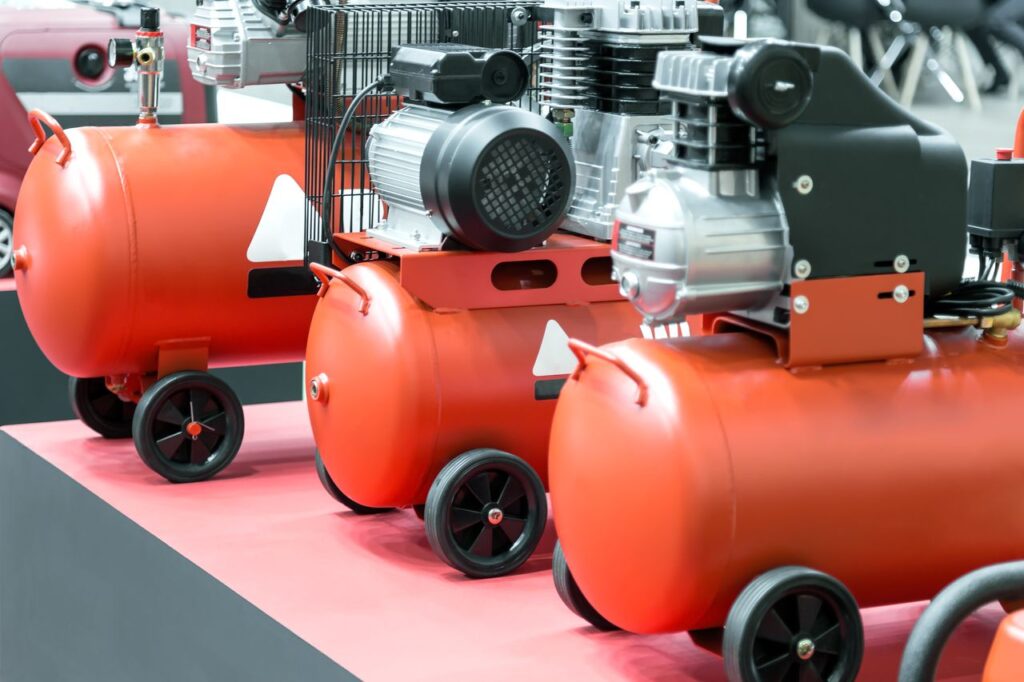Air Compressor
- Home
- Compressors
- Air Compressor
Air Compressor

Air compressors are essential machines used to generate compressed air by compressing atmospheric air or other gases. Among the various types, the most commonly used air compressors are screw compressors, piston compressors, and centrifugal (turbo) compressors. While there are other specialized compressors for specific needs, these three types are the most preferred. Additionally, systems like compressed air tanks, dryers, line filters, and distribution systems are often integrated with compressors to produce and manage compressed air efficiently.
Common Uses of Air Compressors:
Air compressors are utilized in numerous applications. A familiar example is inflating car tires. Compressed air is also essential in vehicles, machinery, and various pneumatic systems. In the market, compressors are often labeled by their air tank capacity, such as the popular “500-liter air compressor.” However, it’s crucial to note that this designation refers to the air tank’s capacity, not the actual air output of the compressor. For instance, compressors with air outputs of 400 liters or 1800 liters might be mounted on a 500-liter tank. The tank capacity alone does not determine the compressor’s ability to meet specific pressure needs.
Key Concepts:
- Flow Rate: The amount of air delivered from the compressor to the system or tank, typically measured in liters per minute or cubic meters per hour.
- Pressure: The force exerted by compressed air on a unit surface, usually expressed in bars or atmospheres (atm).
Air Compressor Prices
Compressor prices can vary significantly due to differences in manufacturers, component quality, and design. Compressors that appear similar in features may differ in price based on the quality of parts used. High-quality components ensure a longer service life and better efficiency. Understanding the materials and design of the compressor can help in choosing a reliable and durable product.
Major Types of Air Compressors
Air compressors can be broadly categorized into three main types:
- Piston Compressors
- Screw Compressors
- Centrifugal (Turbo) Compressors
These basic types can further be distinguished by specific features:
- Number of Compression Stages: Single-stage or multi-stage compressors.
- Cooling Method: Air, water, or oil cooling.
- Lubrication Method: Oil-lubricated or oil-free.
- Driving Method: Types include internal combustion engines, electric motors, and steam engines.
- Customization: Standard or custom-made compressors.
Selecting a compressor that matches the specific requirements of your application will enhance efficiency and performance.
General Review of Air Compressors
Piston Compressors
Piston compressors, or reciprocating compressors, operate on the principle of positive displacement. They compress air in a closed volume and push it to a high-pressure side. This compression process is continuous, driven by the piston’s movement within the cylinder.
Depending on the piston’s motion, these compressors can be:
- Single-Acting: Compress air in one direction.
- Double-Acting: Compress air in both directions.
Each cylinder has spring-loaded valves that open based on the pressure differential, ensuring proper intake and discharge of air. Piston compressors can be cooled using air, water, or oil. The choice between oil-lubricated and oil-free designs depends on whether oil is present around the piston.
Screw Air Compressors
Screw compressors, also positive displacement compressors, are the most preferred type due to their efficiency and reliability. Typically single-stage and oil-cooled, they feature interlocking rotors that compress the air. Unlike piston compressors, screw compressors do not have intake and outlet valves. Instead, they use oil injection to cool the rotors and maintain optimal operating temperatures.
Oil-free screw compressors, which do not inject oil into the compression chamber, are used to produce contaminant-free compressed air. Cooling in these compressors is achieved using air or water.
Centrifugal (Turbo) Compressors
Centrifugal compressors operate on a different principle, using high-speed rotating impellers to transfer energy to the air, creating pressure. These impellers, designed to withstand high pressures, accelerate the air, which then slows down in fixed diffusers, converting velocity into pressure.
Centrifugal compressors are oil-free by design, as the lubrication for the impellers is separated from the air path by seals and ventilation mechanisms. They are ideal for applications requiring continuous, high-speed operation and oil-free air. These compressors can also incorporate water cooling systems.
Choosing the Right Compressor
When selecting a compressor, consider the specific needs of your application, such as pressure requirements, flow rate, cooling method, and lubrication type. Evaluating these factors will help you choose a compressor that delivers optimal performance and efficiency.
By understanding the different types and features of air compressors, you can make an informed decision that best suits your needs, ensuring reliable and efficient operation for your applications.
